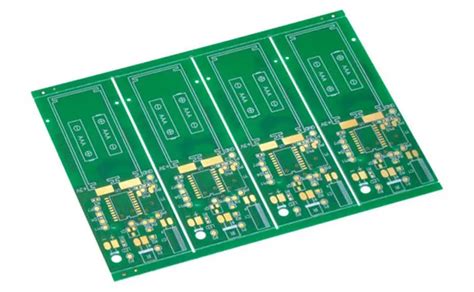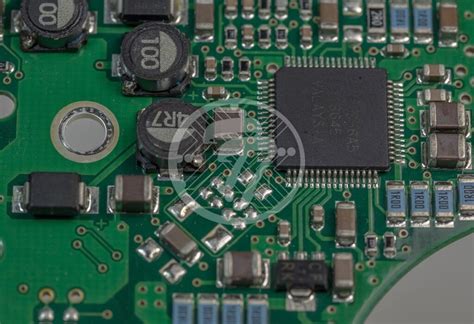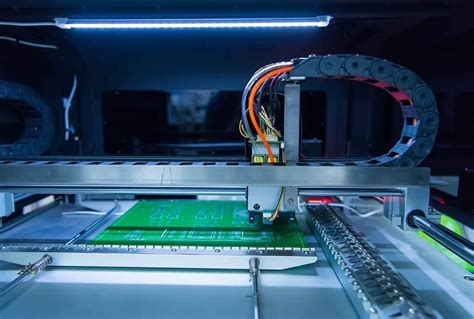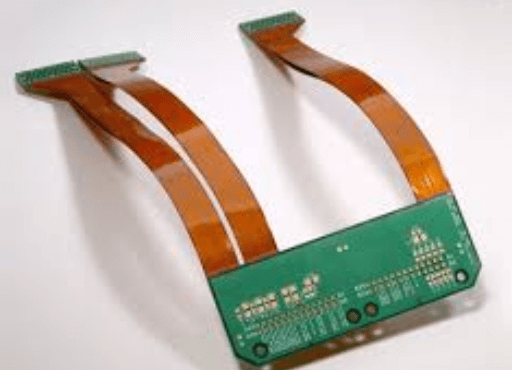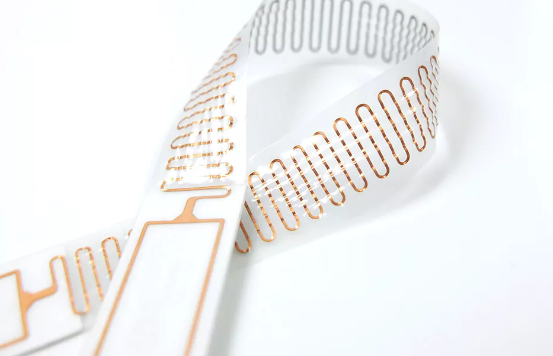Heavy copper pcb market
Growth Trends in the Heavy Copper PCB Market
The heavy copper PCB market has been experiencing significant growth, driven by a confluence of technological advancements and increasing demand across various industries. As electronic devices become more sophisticated and power-intensive, the need for durable and efficient printed circuit boards (PCBs) has become paramount. Heavy copper PCBs, characterized by their thicker copper layers, offer enhanced thermal management and current-carrying capacity, making them ideal for high-power applications. This growing demand is particularly evident in sectors such as automotive, industrial machinery, and renewable energy, where reliability and performance are critical.
One of the primary factors contributing to the expansion of the heavy copper PCB market is the rapid development of electric vehicles (EVs).
As the automotive industry shifts towards electrification, the need for robust electronic components that can withstand high currents and temperatures has surged. Heavy copper PCBs are increasingly being utilized in EV powertrains, battery management systems, and charging infrastructure, providing the necessary durability and efficiency. This trend is expected to continue as governments worldwide implement stricter emissions regulations and offer incentives for EV adoption, further propelling the market forward.
In addition to the automotive sector, the industrial machinery industry is also witnessing a growing reliance on heavy copper PCBs.
As automation and smart manufacturing become more prevalent, the demand for reliable and high-performance electronic components has intensified. Heavy copper PCBs are well-suited for industrial applications due to their ability to handle high power loads and dissipate heat effectively. This makes them an attractive choice for machinery control systems, power converters, and motor drives, where operational efficiency and longevity are crucial.
Moreover, the renewable energy sector is playing a pivotal role in driving the heavy copper PCB market.
With the global push towards sustainable energy sources, there is an increasing need for efficient power conversion and distribution systems. Heavy copper PCBs are integral to the design of solar inverters, wind turbine controllers, and energy storage systems, where they help optimize performance and ensure reliability. As investments in renewable energy infrastructure continue to rise, the demand for heavy copper PCBs is expected to grow in tandem.
Furthermore, advancements in PCB manufacturing technologies have facilitated the production of heavy copper PCBs, making them more accessible and cost-effective.
Innovations such as improved etching techniques and precision plating have enabled manufacturers to produce PCBs with thicker copper layers without compromising on quality or performance. This has not only expanded the range of applications for heavy copper PCBs but also attracted new players to the market, intensifying competition and driving further innovation.
In conclusion, the heavy copper PCB market is poised for sustained growth, fueled by the increasing demand from key industries such as automotive, industrial machinery, and renewable energy. As these sectors continue to evolve and embrace new technologies, the need for reliable and high-performance electronic components will only intensify. Heavy copper PCBs, with their superior thermal management and current-carrying capabilities, are well-positioned to meet these demands. Consequently, stakeholders in the PCB industry are likely to witness a dynamic and competitive landscape, characterized by ongoing technological advancements and expanding market opportunities.
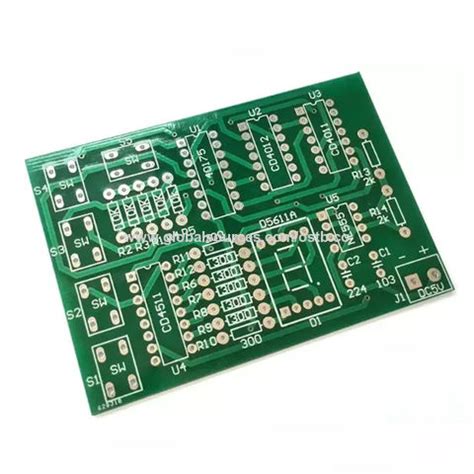
Innovations Driving Heavy Copper PCB Technology
The heavy copper PCB market has witnessed significant advancements in recent years, driven by a combination of technological innovations and increasing demand across various industries. Heavy copper PCBs, characterized by their thick copper layers, are essential in applications requiring high current carrying capacity and enhanced thermal management. As industries such as automotive, aerospace, and renewable energy continue to evolve, the need for robust and reliable electronic components has become more pronounced, thereby propelling the growth of heavy copper PCB technology.
One of the primary innovations driving this market is the development of advanced manufacturing techniques.
Traditional PCB manufacturing processes often struggle to accommodate the unique requirements of heavy copper designs. However, recent advancements in etching and plating technologies have enabled manufacturers to produce PCBs with copper thicknesses exceeding 20 ounces per square foot. These techniques not only enhance the durability and performance of the PCBs but also allow for more complex and compact designs, which are crucial in modern electronic applications.
Moreover, the integration of computer-aided design (CAD) software has revolutionized the way heavy copper PCBs are designed and manufactured.
CAD tools enable engineers to simulate and optimize PCB layouts before production, ensuring that the final product meets the stringent requirements of high-power applications. This digital approach reduces the likelihood of errors and material wastage, leading to more efficient production processes and cost savings for manufacturers. As a result, the adoption of CAD software has become a standard practice in the industry, further driving the market forward.
In addition to manufacturing advancements, material innovations have also played a pivotal role in the evolution of heavy copper PCB technology.
The development of high-performance substrates and dielectric materials has significantly improved the thermal and electrical properties of these PCBs. For instance, the use of polyimide and ceramic-based materials has enhanced the thermal conductivity and stability of heavy copper PCBs, making them suitable for high-temperature environments. These material innovations not only extend the lifespan of the PCBs but also expand their applicability across a wider range of industries.
Furthermore, the growing emphasis on sustainability and energy efficiency has influenced the heavy copper PCB market.
Manufacturers are increasingly adopting eco-friendly practices and materials to reduce the environmental impact of PCB production. This shift towards sustainable manufacturing is not only driven by regulatory requirements but also by consumer demand for greener products. Consequently, the development of recyclable and biodegradable materials for heavy copper PCBs is gaining traction, offering a promising avenue for future growth in the market.
As the heavy copper PCB market continues to evolve, collaboration between industry stakeholders is becoming increasingly important.
Partnerships between PCB manufacturers, material suppliers, and end-users are fostering innovation and driving the development of new solutions tailored to specific industry needs. These collaborations are essential for addressing the challenges associated with heavy copper PCB production, such as managing heat dissipation and ensuring mechanical stability.
In conclusion, the heavy copper PCB market is experiencing a period of dynamic growth, fueled by technological innovations and evolving industry demands. Advances in manufacturing techniques, design software, and materials are enhancing the performance and applicability of heavy copper PCBs, while sustainability considerations are shaping the future of the industry. As these trends continue to unfold, the heavy copper PCB market is poised to play a crucial role in the advancement of high-power electronic applications across various sectors.
Key Applications of Heavy Copper PCBs in Industry
The heavy copper PCB market has been experiencing significant growth, driven by the increasing demand for durable and efficient electronic components across various industries. Heavy copper PCBs, characterized by their thick copper layers, offer enhanced thermal and electrical conductivity, making them indispensable in applications where reliability and performance are paramount. As industries continue to evolve, the role of heavy copper PCBs becomes increasingly critical, particularly in sectors such as power electronics, automotive, renewable energy, and industrial machinery.
In the realm of power electronics, heavy copper PCBs are essential due to their ability to handle high current loads and dissipate heat effectively.
These characteristics are crucial in power supply systems, where maintaining stable and efficient power distribution is vital. Heavy copper PCBs are often employed in power converters, inverters, and motor controllers, where they ensure the seamless operation of devices by minimizing energy loss and enhancing thermal management. Consequently, the demand for heavy copper PCBs in power electronics is expected to rise as the industry seeks to develop more efficient and compact power solutions.
Transitioning to the automotive industry, heavy copper PCBs play a pivotal role in the development of electric vehicles (EVs) and advanced driver-assistance systems (ADAS).
As the automotive sector shifts towards electrification, the need for robust and reliable electronic components becomes increasingly apparent. Heavy copper PCBs are utilized in battery management systems, charging stations, and powertrain components, where they contribute to the overall efficiency and safety of EVs. Additionally, in ADAS applications, these PCBs support the complex electronic systems required for features such as adaptive cruise control and collision avoidance, ensuring that vehicles operate safely and effectively.
Moreover, the renewable energy sector benefits significantly from the application of heavy copper PCBs.
As the world moves towards sustainable energy solutions, the demand for efficient and reliable power conversion systems in solar and wind energy applications is on the rise. Heavy copper PCBs are integral to the design of inverters and converters used in these systems, where they facilitate the efficient transformation of energy from renewable sources into usable electrical power. Their ability to withstand high temperatures and currents makes them ideal for use in harsh environmental conditions, further solidifying their importance in the renewable energy landscape.
In industrial machinery, heavy copper PCBs are indispensable due to their durability and ability to support high-power applications.
They are commonly found in equipment such as welding machines, industrial motor drives, and uninterruptible power supplies (UPS). In these applications, heavy copper PCBs ensure that machinery operates efficiently and reliably, even under demanding conditions. Their robust construction allows them to endure mechanical stress and thermal cycling, which are common in industrial environments, thereby extending the lifespan of the equipment and reducing maintenance costs.
In conclusion, the heavy copper PCB market is poised for continued growth as industries increasingly recognize the benefits of these advanced electronic components. Their application across power electronics, automotive, renewable energy, and industrial machinery underscores their versatility and indispensability. As technological advancements continue to drive the demand for more efficient and reliable electronic systems, heavy copper PCBs will remain at the forefront, providing the necessary support to meet the evolving needs of various industries.

Challenges and Opportunities in the Heavy Copper PCB Market
The heavy copper PCB market, a niche yet crucial segment within the broader printed circuit board industry, is experiencing a dynamic phase characterized by both challenges and opportunities. As industries such as automotive, aerospace, and renewable energy increasingly demand robust and reliable electronic components, heavy copper PCBs have emerged as a vital solution due to their enhanced thermal management and current-carrying capabilities. However, navigating this market requires a keen understanding of the various factors influencing its trajectory.
One of the primary challenges facing the heavy copper PCB market is the complexity of manufacturing processes.
Unlike standard PCBs, heavy copper variants require specialized techniques to handle the increased thickness of copper layers, which can range from 3 oz/ft² to over 20 oz/ft². This necessitates advanced equipment and expertise, often leading to higher production costs. Consequently, manufacturers must balance the need for quality and performance with cost-effectiveness, a task that demands continuous innovation and investment in research and development.
Moreover, the heavy copper PCB market is subject to fluctuations in raw material prices, particularly copper.
As a commodity, copper prices are influenced by global economic conditions, supply chain disruptions, and geopolitical factors. These fluctuations can significantly impact the cost structure of PCB production, posing a challenge for manufacturers striving to maintain competitive pricing. To mitigate this risk, companies are exploring alternative materials and alloys that can offer similar performance characteristics at a lower cost, although these solutions are still in the developmental stages.
Despite these challenges, the heavy copper PCB market is ripe with opportunities, driven by the growing demand for high-performance electronic components.
The automotive industry, for instance, is increasingly incorporating heavy copper PCBs in electric vehicles (EVs) and advanced driver-assistance systems (ADAS) due to their ability to handle high currents and dissipate heat efficiently. This trend is expected to accelerate as the global push towards electrification and autonomous driving continues to gain momentum.
Similarly, the renewable energy sector presents significant growth prospects for heavy copper PCBs.
As solar power systems and wind turbines require reliable and durable electronic components to manage power conversion and distribution, heavy copper PCBs are becoming indispensable. Their ability to withstand harsh environmental conditions and maintain performance over extended periods makes them an ideal choice for these applications.
Furthermore, advancements in technology are opening new avenues for the heavy copper PCB market.
The development of innovative manufacturing techniques, such as additive manufacturing and laser direct structuring, holds the potential to streamline production processes and reduce costs. These technologies not only enhance the precision and efficiency of PCB fabrication but also enable the creation of complex designs that were previously unattainable.
In conclusion, while the heavy copper PCB market faces several challenges, including manufacturing complexities and volatile raw material prices, it also presents numerous opportunities for growth and innovation. By leveraging advancements in technology and capitalizing on the increasing demand from key industries, manufacturers can position themselves to thrive in this evolving landscape. As the market continues to develop, stakeholders must remain agile and forward-thinking, embracing both the challenges and opportunities that lie ahead.

